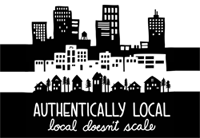This is part of the essay “Ravenna Park (Seattle)“, appearing here thanks to HistoryLink.org and author Peter Blecha, under a Creative Commons license.
[If you’re new to the series, you can start with Part 1 here.]
Cowen and Ravenna Parks Today
After the Ravenna Creek was diverted according to Olmsted’s Master Plan of 1903, it was never quite the same. Once a moist, lush, “deep, secluded wooded ravine,” it dried up and became far less attractive (Becker). Then in the mid-1930s the public successfully pressured the city into filling in and leveling the lower southeastern end of Ravenna in order to make playfields. Similarly, in the early 1960s — and as work progressed on construction of Interstate 5 (a few blocks to the west) — 100,000 cubic yards of excavation spoils were trucked over, dumped into Cowen Park, and the filled-in former ravine was effectively transformed into a street-level plane suitable for ball-fields and swing-sets (which is what exists there today).
Another tragic occurrence was the city’s trail maintenance efforts of a few decades back when a bulldozer operator unwittingly disrupted the once-flowing spring’s source while working on the adjacent footbridge. It has been but a mere trickle ever since.
Meanwhile, the Ravenna community has periodically had to battle the City over seemingly endless schemes to divert what remained of Ravenna Creek into sewers. Examples of such skirmishes include a 1948 plan by the City Engineer, which was successfully forestalled, and another in 1986 when plans to use the ravine as a staging area for a major stormwater drainpipe installation project. The latter actually served the purpose of galvanizing park supporters to rally for new efforts to restore and protect the park.
Subsequently, a community group called the Ravenna Creek Alliance advocated for “daylighting” some long-buried portions of creek. Due to the efforts of these citizens, the southeastern end of Ravenna Park has been beautifully landscaped, with new rails and riparian habitat restored along a good portion of the long-abused creek.
______________________
Sources:
W. W. Beck, Ravenna Park – ‘Im Walde,’ (1903), Peter Blecha collection, Seattle; W. W. Beck, Ravenna Park – ‘Im Walde,’ 16-page postcard booklet, undated, in Peter Blecha collection; W. W. Beck, Ravenna Park (ca. 1909), Peter Blecha collection; “Ravenna Park Guide,†brochure, 1909, Peter Blecha collection; “Ravenna Or Big Tree Park: It is Famous = “Nature’s Exposition,†postcard, 1909, Peter Blecha collection; Harvey Manning, Winter Walks and Hikes (Seattle: Mountaineers Books, 2002), 42; Betty McDonald, Anybody Can Do Anything (Philadelphia / New York: J. B. Lippincott Co, 1950), 129-130; Paula Becker, “Time Traveling The Roosevelt District With Betty Macdonald,†Seattlepress.com website accessed July 13, 2010 (http://seattlepress.com/article-9455.html); “One of Ravenna’s Giant Trees Christened ‘Paderewski,’†Interlaken, February 8, 1908, p. 1; Sophie Frye Bass, When Seattle Was A Village (Seattle: Lowman & Hanford Co., 1947), 106-108: David Buerge, “Indian Lake Washington,†Seattle Weekly, August 1-7, 1984; Seattle Polk City Directory (1901-1934); Directory of the National Society of the Daughters of the American Revolution (Washington D.C.: Memorial Continental Hall, 1911), 1340; “Mrs. L. C. Beck Funeral To Be Held Today: Woman Widely Known In Musical and Club Circles Is Mourned By Seattle Friends,†Seattle Post-Intelligencer, July 9, 1928, p. 13; Kate C. Duncan 1001 Curious Things: Tales from Ye Olde Curiosity Shop (Seattle: University of Washington Press, 2000), 73-78; Andrea Casadio, email to Peter Blecha, January 30, 2008; “No Finer Site: The University of Washington’s Early Years On Union Bay,†Web exhibition, University of Washington Libraries website accessed August 19, 2010 (http://lib.washington.edu/exhibits/site/); HistoryLink.org Online Encyclopedia of Washington State History, “Seattle’s Ravenna Park Bridge is constructed in 1913″ (by Priscilla Long), and “WPA builds Cowen Park Bridge in Seattle’s Ravenna neighborhood in 1936″ (by Priscilla Long), and “John Olmsted arrives in Seattle to design city parks on April 30, 1903″ (by David Williams and Walt Crowley), and “David Thomas Denny (1832-1903)†(by David Wilma), http://www.historylink.org/ (accessed August 1, 2010); Esther Campbell, Bagpipes in the Woodwind Section (Seattle: Seattle Symphony Women’s Association, 1978), 9; William Arnold, “The Great Mystery of Ravenna Park,†Seattle Post-Intelligencer, Northwest Today section, December 17, 1972, pp. 8-9; Steve Cronin, “Ravenna Park’s Famous Trees Vanished Furtively,†UW Daily, May 25, 1977, p. 3; James Bush, “Remembering William W. Beck: The Father of Ravenna Park,†The Seattle Sun, August 2003, The Seattle Sun website accessed August 25, 2010 (http://parkprojects.com/2003news/0308aug/hisbeck.html); Mary R. Watson, travel diary (handwritten), 1910, portion accessed on eBay, December 2006, copy in possession of Peter Blecha; Russ Hanbey, “1916 Seattle was a Hotbed of Sin When 2 Officers Were Killed,†The Seattle Times, February 6, 2010 (http://seattletimes.nwsource.com); and Peter Blecha archives.








Stay Connected